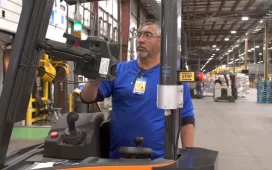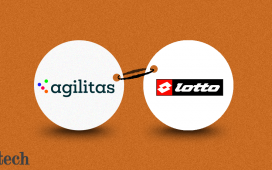A string of Chinese industrial firms including construction machinery giant Sany Heavy Industry Co. and electric-vehicle parts supplier Zhejiang Sanhua Intelligent Controls Co. have raised billions of dollars on the SIX Swiss Exchange through global depositary receipts since a cross-listing program was launched in July last year. Now China’s battery heavyweight Contemporary Amperex Technology Co., or CATL, is jumping in, seeking to raise at least $5 billion through GDRs in the largest such issuance by a Chinese company.
As these companies expand their footprint, global electric-vehicle makers should be on alert as China’s cars, parts and batteries find a home in a new market.
The move is well timed and makes the most of brewing regulatory pressure to lower emissions, as well as simmering supply-chain pressures. Late last year, Europe announced requirements that all new cars and vans registered in the region should be zero-emission by 2035 and that average emissions of new cars must come down by 55% by the end of the decade. That’s accelerated the demand for green vehicles, so much so that EV penetration in the region is expected to reach 64% by 2030, exceeding the 50% regulatory threshold, according to S&P Global Mobility and Citigroup Inc analysts. In addition, countries across the world are vying for self-sufficiency as policies like the US Inflation Reduction Act create a sense of urgency.
For Europe, though, meeting these targets and industrial production goals won’t be easy without the factory floor of the world. Manufacturers are trying to ramp up production and boost capital expenditure to reach their own EV targets. At the same time, they are contending with high energy bills and rising raw material costs. They will need batteries, thermal valves, motors and all the other components that make up an electric car. To build the factories companies will need the diggers, too. China’s firms are tapping into this growing industrial demand to expand their overseas businesses. Sany Heavy, for instance, was already pushing its exports despite its floundering sales at home. Meanwhile, little-known Zhejiang Sanhua — which makes a variety of valves and has been a key supplier to global EV manufacturers — was set to raise about $1 billion through GDRs in Switzerland. EV battery maker Gotion High-Tech Co. is now closer to its largest shareholder Volkswagen AG’s market.
Finding new markets, particularly as avenues into the US narrow, is a necessity for Chinese companies. Even though its domestic market is the world’s biggest for EVs, analysts now expect it to normalise, meaning the retreat of sky-high growth rates to a more tempered 30%. There are already nascent worries that too much EV production capacity is building up and that it may far exceed demand growth. In addition, most new buyers are expected to be in Tier 3 to 4 cities, meaning the EVs may well sell in big numbers, but they won’t be the high margin, expensive kind. Meanwhile, plug-in hybrid vehicles are also expected to grow sharply in China. All told, there are signs it’s time to ensure these companies have other options.
As important as more foreign-currency funding is for these industrial firms looking to do business abroad, the actual sums being raised by individual firms aren’t enormous relative to their market capitalizations at home: CATL’s potential $5 billion to $6 billion pales in comparison to its 1.1 trillion yuan ($163 billion). So these listings are more symbolic at this point. Raising money in Europe — in public markets — makes investors and consumers aware and is a savvy international marketing exercise. Chinese companies and policymakers have long vied for global dominance and struggled to shed the perception of subpar offerings, especially when it comes to automobiles and machinery. Over two decades ago, officials pushed their enterprises to invest overseas. Big firms, financed by government banks, bought up assets and manufacturers overseas, focusing on ownership. Some failed, casting doubt on whether China could ever make it on the Fortune 500 scale, competing alongside global multinationals. As US-China relations soured, they retreated.
This time, Chinese enterprises are taking the lead to ensure their industrial wares are integrated into supply chains, expanding businesses and filling gaps. CATL is expected to ramp up battery production in Germany, as is Gotion. EVs made by BYD Co. and others are becoming a more common sight already, building trust within the industrial complex and importantly, among consumers. Raising capital in Europe will take this a step further.
As China Inc. starts its European roadshow, the plan looks like it may have legs this time.












